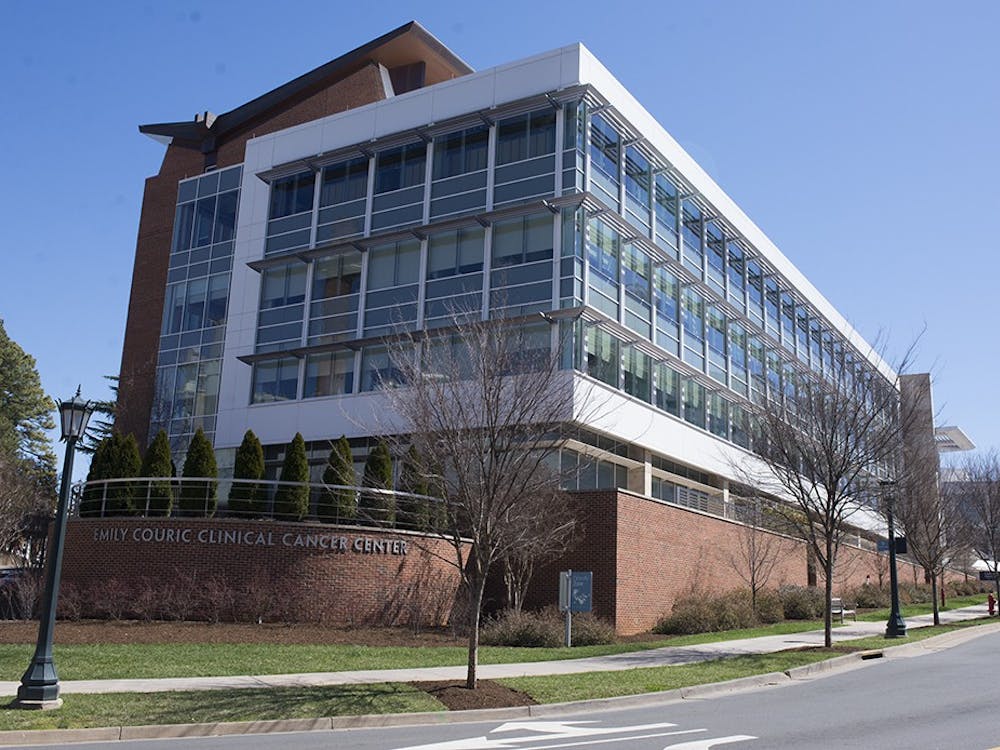Spring is in the air, giving many students a sense of renewal and new beginnings. To some, it may be a time to get in shape again. But spring also dumps a plethora of midterms and projects on students, so can anyone really find the time to take care of personal fitness?
"I had been going to the gym five days a week, but between classes and rehearsals this semester, I've only made it to the gym twice so far. It's really hard to be healthy when you don't even have time to sleep, let alone get to the gym," third-year College student Tasha Nadasdi said.
And scheduling is only one of the obstacles that make it difficult for students to exercise.
"At the beginning of the semester, I always make plans to go to the gym, but despite living in Brown and being 5 feet away from [Memorial Gymnasium], I never manage to get there on my own," third-year College student Farrell Newman said. "The problem is that I like going to the gym, but it's so inconvenient to have to change clothes and plan studying around it."
Newman is far from being alone. As second-year College student Denny Staples summed up his health routine, "An apple a day keeps the doctor away."
As difficult as it may be to implement, exercise can benefit students in many ways, and not just by improving their physical appearances. It can, for example, have a positive influence on mood, stave off chronic diseases such as osteoporosis, boost energy levels, improve sleep and even revamp sex lives, according to the Mayo Clinic. As a result, exercise is a topic near and dear to many students' hearts, even if they don't always have time to set aside specifically for that purpose.
"I'm too busy to go to the gym, but I go out dancing every Thursday, Friday and Saturday night," second-year College student Anna Kushner said.
Kushner's method hints at just one way students may reconcile personal fitness with their demanding academic and social lives.
"It is a common misconception that the only way to work out is to go to the gym," Peer Health Educator Lizzie Elsberg said. "It is recommended that people exercise about 30 minutes per day, but this does not mean you have to go outside and run everyday. This daily exercise can be achieved by participating in fun activities, like playing a sport, gardening, walking your dog or washing your car."
LIVESTRONG.COM, an organization started by the Lance Armstrong Foundation and Demand Media to promote health and fitness, states on its Web site that heavy cleaning activities such as washing the car or cleaning windows can burn 261 calories per hour for an average, 145-pound person. This is equal to running for 20 minutes.
Even less exciting activities can contribute to personal fitness.
"Just be conscious of the actions you take," Elsberg said. "For example, leave for class 10 minutes earlier and walk instead of taking the bus. It's important to stay active because it is important to your health, but try not to view this as a chore. Have fun and be creative with the ways you choose to be active."
No matter how they choose to approach fitness, students have many options available to them on Grounds. If gyms do suit their tastes, they can choose between the Aquatic & Fitness Center, Memorial Gymnasium, North Grounds Recreation Center and Slaughter Recreation Center. For other activities, students may visit the Outdoor Recreation Center and The Park in North Grounds, which includes a pavilion, walking and jogging trails and four multipurpose fields.
For those who want even more variety, the department of Intramural-Recreational Sports offers an assortment of group exercise programs, from yoga and dancing to outdoor recreational programs, intramural sports, personal training, massage therapy and even the Poplar Ridge challenge course for team-building in the great outdoors.
This variety of options shows just how much a student can personalize his exercise regimen. Second-year College student Mary Catherine Kinniburgh, who works as a yoga instructor and personal trainer at the AFC, expands upon this idea, describing how health and wellness can mean different things for different people.
"Being healthy is being able to function within the lifestyle that you want to have," she said. "It's such a hard concept because you have so many people telling you what healthy is, and you're constantly receiving mixed messages. Health is a very individual thing and a general feeling of wellness. It has nothing to do with what you look like, and it isn't just the active lifestyle."
That half-hour of exercise, after all, is important, but it is not all that is needed to maintain a healthy lifestyle.
"I think it's positive that you can go outside and see people running, playing Frisbee, walking their dogs, but as a teacher, I sometimes feel that people don't understand that there should be a philosophy behind it," Kinniburgh said.






